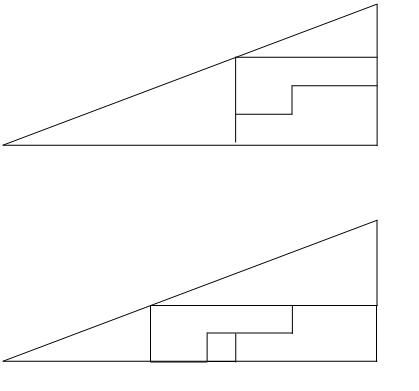TekkenMaster said:Yes you are right the red and green are not similar.
Your previous post was ambigious, I thought you meant the two red, likewise for green, triangles are not congruent.
Well the test itself says that the figures in the first big shape are the same as the ones making up the second one, so yeah the red triangle is congruent to the second red triangle, and all the other shapes too with each other.
And... i can't believe i remember this sort of stuff from school...


